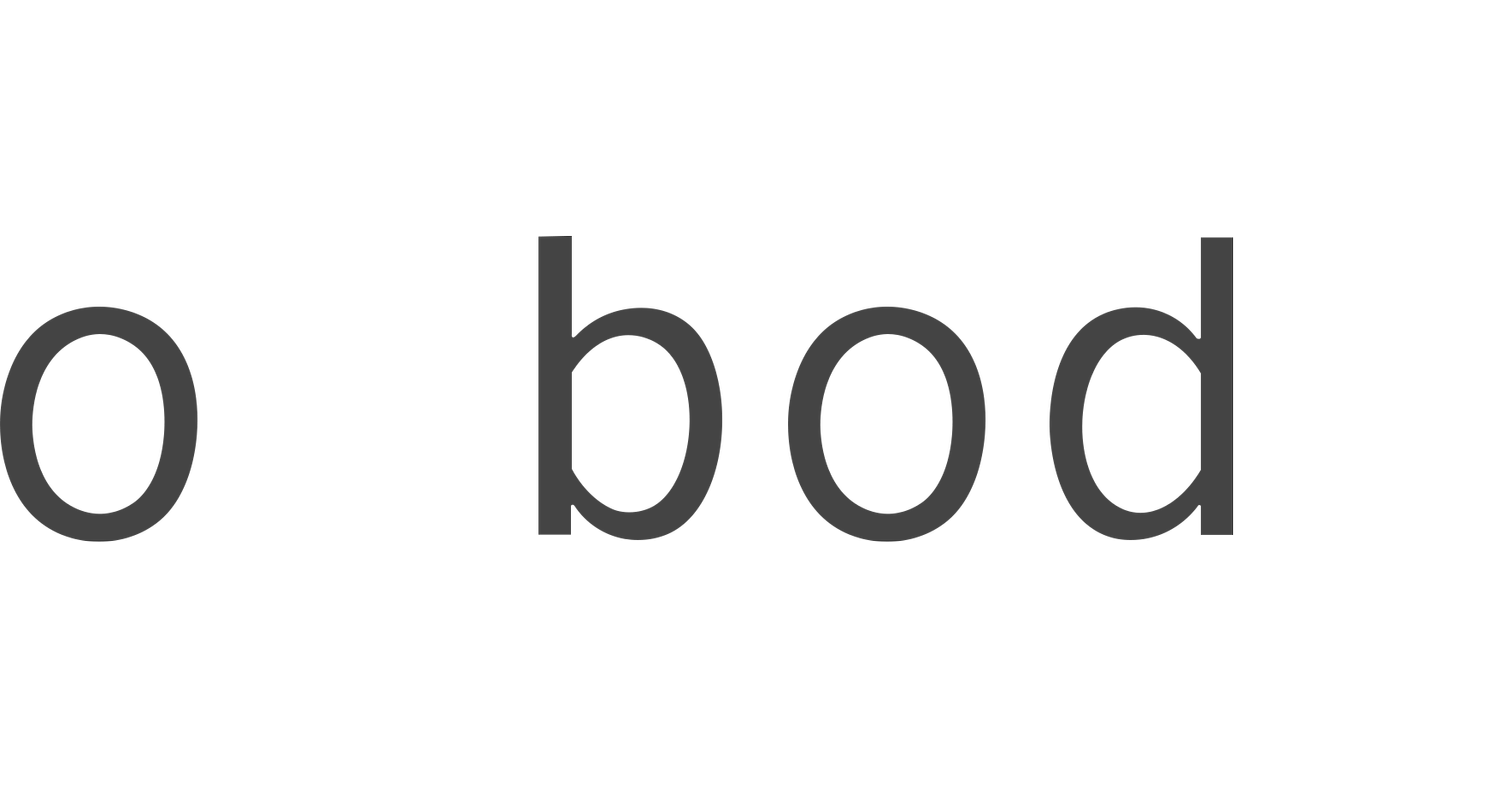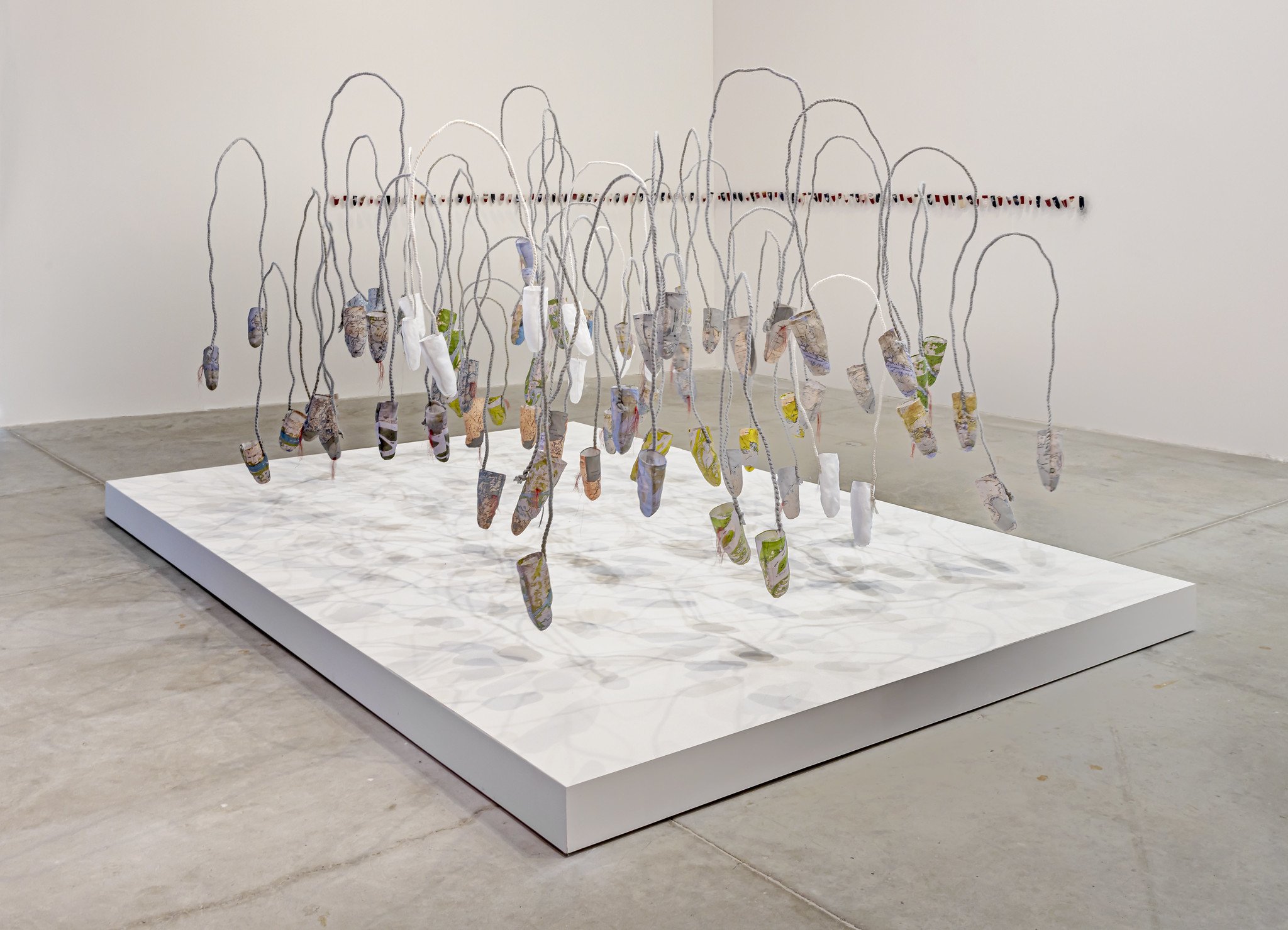Three Works by Sonya Kelliher-Combs | Anna Kovler
December 29, 2022
Sonya Kelliher-Combs, Shedding Skin (detail), 2022, installation, The Power Plant | image: Toni Hafkenscheid
A thread drawn through a needle must be strong enough to withstand stitching yet elastic enough to allow the body to move within its grasp. Artist Sonya Kelliher-Combs channels this remarkable balance in artworks that reflect on the history, present, and future of her Iñupiat and Athabascan ancestors. Three of the artist’s sculptural installations feature in the group exhibition Arctic/Amazon: Networks of Global Indigeneity at the Power Plant in Toronto, running until December 31, 2022.
Sonya Kelliher-Combs, Shedding Skin, 2022, installation, The Power Plant | image: Toni Hafkenscheid
Kelliher-Combs’s Shedding Skin (2022) is composed of hundreds of steel sewing needles pinned into the gallery wall. One nylon thread snakes through several eyelets before draping and coming to rest on the floor. A new thread takes its place, and the cycle begins again, forming a pattern with horizontal continuities and vertical breaks that approaches the appearance of asemic text. Up close, the viewer might see one thread break and fall, but, from a distance, the threads speak of continuance; they shimmer like a snake skin under the sun.
Idiot Strings – Credible (2022) is a chorus of figures or apparitions that resemble mittens with mitten strings frozen in animation. They float at a child’s height. In reference to the systemic sexual abuse by the Jesuit ministry in Alaska in the twentieth century, the work commemorates children of Alaska’s Indigenous communities. The mittens are printed with maps of where abuses occurred. Bright blood-red threads pour out from specific cities – Seward, Cordova, Juneau, Andreafsky, Holy Cross – as if from open wounds, while the entire structure gently sways, pushed by the air movement of viewers in the gallery space. The sculpture is animate and appears to breathe as history is made present.
Sonya Kelliher-Combs, Idiot Strings – Credible, 2022, installation, The Power Plant | image: Toni Hafkenscheid
The third installation, Red, White, and Blue, Small Secrets (2022), is an array of small sewn pockets lined up neatly, almost studiously, in a single row along the gallery wall. They file round a corner and extend onto the wall adjacent. Made of cotton fabric, the pockets hold the colors and shapes of the American flag with fine detailing in glass beads and human hair. The repeating shape evokes what one small hand might cup and hold. The fabric and hair are corporal and intimate, while the flag itself confronts as a symbol of settler-colonial violence against land and peoples. The composition draws power from these chimeric elements. We see how the flag can be, necessarily, cut up and repurposed, while needle and thread emerge again as more than a technology but a language of creative action.
Sonya Kelliher-Combs, Red, White, and Blue, Small Secrets, 2022, installation, The Power Plant | image: Toni Hafkenscheid
This December, I spoke with Kelliher-Combs about these three installations and her art practice. An edited transcript of our conversation follows.
Anna Kovler
I know that in your childhood you spent summers on the land, making clothing and objects, and I’m curious what those objects were and what processes were involved.
Sonya Kelliher-Combs
So, I grew up with my siblings, parents and grandparents spending a majority of my summer at our camp which was a placer gold mine – I’m from a gold mining family – which is in conflict, in some ways, to living what people call a subsistence lifestyle. I like to think of it as living off the land – not subsisting. Because we hunted and gathered, much of our time was spent preparing and processing food. My mom made some of our clothes and most of our winter garments, and this is where I began my training as a sewer and beader. It was a beautiful way to grow up, living on the land, I am very thankful for this time. Today my husband and extended family spend our summers at our cabin doing many of the same activities we did as children.
AK
You have revisited the work Small Secrets over the years. In 2009, the shapes are made of walrus gut; now, in 2022, they are made of cotton fabric printed with the American flag. What does this finger or mini-mitten shape mean for you, and how has it changed?
SKC
There are tusk forms found on Inupiaq parkas, and originally the “secret” shape is reminiscent of that form. It’s a pattern I grew up with. I began using that shape in 2D and eventually I started making small soft sculptures, which became what I call the Secret Series. Broken down further, there are three series: Small Secrets, Large Secrets, and Idiot Strings. The shape is metaphorical for secrets – everyone has at least one. I have made them in reindeer and sheep rawhide, men’s ties, found bed sheets, seal intestine, and walrus stomach. I’ve made thousands of them. I really like that viewers bring their own perspective to the work. Some people immediately think of them as prophylactics, others think they’re finger forms. They all seem to agree that there is something mysterious about them. I have been working on this series for over 20 years.
AK
I am curious about the pattern of the needles in Shedding Skin.
SKC
Shedding Skin is a site-specific drawing that uses needle and thread to create the composition. The forms within the drawing are the same “Secret” shape found in Red, White, and Blue Small Secrets and Idiot Strings – Credible. The shape is repeated over and over again, each similar but varied. It’s composed of different color threads representing the variation of people’s skin. I believe we are more similar than we are different; we all share common DNA. The threads in this installation speak about our relationship to each other, lineage, and familial lines. Some are connected, while others break but always come back together. As the thread falls to the ground, the colors are mixed, overlapping and mingling. I believe the work can be read in many different ways. I think of the impacts of colonization and historical trauma and how Indigenous People have persevered. I also think of how within our families we might look different on the outside, but we are still tied to the land a part of this place and a continuum of a rich and vibrant people.
AK
Your installations often feature a grouping of similar but distinct forms. They remind me of people in a community.
SKC
That’s exactly what it’s about. Shedding Skin and Idiot Strings, utilizing the repeating shape, represent that we are all similar but different. In Idiot Strings the shadow is important because the pieces are individual but their shadows overlap. They are fluid not stagnant. Those strings are memorials, not to a single individual, but to those who have been lost through suicide. It’s about trauma and resilience and survival.
AK
Your work talks about traumatic realities. How do you balance a need to commemorate with a desire to move beyond trauma?
SKC
I think I am trying to find a space where one can acknowledge it – trauma, history – all of it. I don’t think it can just go away – it is an ongoing dialogue. For people who’ve experienced that trauma, it’s there always. It’s about living with it and finding a way to move through it.
Sonya Kelliher-Combs (b. 1969) is an Iñupiaq and Athabascan multidisciplinary artist based in Anchorage, Alaska. Her BA of Fine Arts is from the University of Alaska Fairbanks and MA of Fine Arts is from Arizona State University. Through mixed media painting and sculpture, Kelliher-Combs offers a chronicle of the ongoing struggle for self-definition and identity in the Alaskan context. Her work has been shown in solo and group exhibitions in Alaska, the United States, and internationally. She is a recipient of the US Arts Fellowship, Joan Mitchell Fellowship, Eiteljorg Fellowship for Native American Fine Art, Rasmuson Fellowship, the 2005 Anchorage Mayor’s Arts Award, and the 2010 Alaska Governor's Individual Artist Award. Her work is included in the collections of the IAIA Museum of Contemporary Native Art, Anchorage Museum, Alaska State Museum, University of Alaska Museum of the North, Eiteljorg Museum, and The National Museum of the American Indian.
Anna Kovler is an artist, writer, and archivist based in Toronto. She was born in Almaty, Kazakhstan, and lived in Israel before immigrating to Canada. She completed a Bachelor’s degree in Studio Art and Art History at the University of Guelph, a Master’s of Fine Art at OCADU, and a Master’s of Information at the University of Toronto. Her writing has been published in magazines including Border Crossings, C Magazine, and Artforum, among others.




